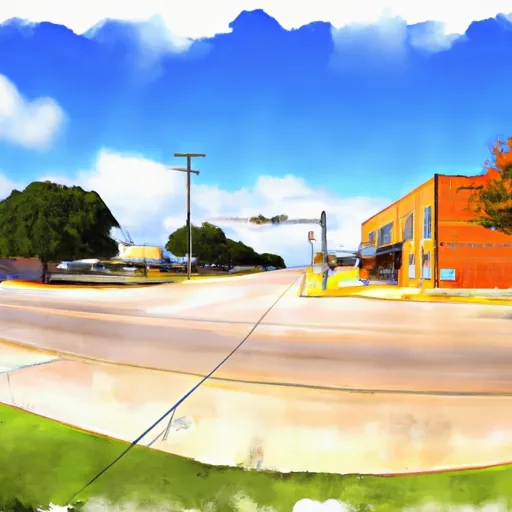-
 Snoflo Premium
Snoflo Premium
Get unlimited access to all our content
With no Ad interruptions! - Start Your Free Trial Login with existing account
Big-Sandy
Eden Index
Climate
9.7
•
Recreation
5.1
•
Community
•
Safeguard
5.7/10

Big Sandy is a small town located in Upshur County, Texas. The climate in Big Sandy is considered humid subtropical, with hot summers and mild winters. The town is situated near Lake Fork Reservoir and the Sabine River, providing ample opportunities for outdoor recreation such as fishing, boating, and hiking. The hydrology constituents of the area include the Sabine River, which runs along the eastern edge of the town, and several creeks and streams. Additionally, the area is part of the East Texas Piney Woods ecoregion, which is characterized by dense forests and diverse wildlife. Big Sandy offers a peaceful and scenic environment for those who enjoy outdoor activities and natural beauty.
What is the Eden Index?
The Snoflo Eden Index serves as a comprehensive rating system for regions, evaluating their desirability through a holistic assessment of climate health, outdoor recreation opportunities, and natural disaster risk, acknowledging the profound impact of these factors on livability and well-being.
Climate Health Indicator (CHI): 9.7
Big-Sandy receives approximately
1144mm of rain per year,
with humidity levels near 78%
and air temperatures averaging around
18°C.
Big-Sandy has a plant hardyness factor of
8, meaning
plants and agriculture in this region tend to thrive here all year round.
By considering the ideal temperature range, reliable water supplies, clean air, and stable seasonal rain or snowpacks, the Climate Health Indicator (CHI) underscores the significance of a healthy climate as the foundation for quality living.
A healthy climate is paramount for ensuring a high quality of life and livability in a region, fostering both physical well-being and environmental harmony. This can be characterized by ideal temperatures, reliable access to water supplies, clean air, and consistent seasonal rain or snowpacks.
Weather Forecast
Streamflow Conditions
Sabine
Area Rivers
Sabine
Snowpack Depths
Sabine
Reservoir Storage Capacity
Sabine
Groundwater Levels
Recreational Opportunity Index (ROI): 5.1
The Recreational Opportunity Index (ROI) recognizes the value of outdoor recreational options, such as parks, hiking trails, camping sites, and fishing spots, while acknowledging that climate plays a pivotal role in ensuring the comfort and consistency of these experiences.
Access to outdoor recreational opportunities, encompassing activities such as parks, hiking, camping, and fishing, is crucial for overall well-being, and the climate plays a pivotal role in enabling and enhancing these experiences, ensuring that individuals can engage in nature-based activities comfortably and consistently.
Camping Areas
| Campground | Campsites | Reservations | Toilets | Showers | Elevation |
|---|---|---|---|---|---|
| Lake Livingston State Park | 160 | 153 ft | |||
| Ratcliff Lake | 72 | 383 ft | |||
| Tyler State Park | 104 | 637 ft | |||
| Fish Hawke Point | None | 359 ft | |||
| Mission Tejas State Park | 15 | 440 ft | |||
| Double Lake | 74 | 301 ft | |||
| City Park Camp - Overton | 40 | 468 ft | |||
| Rusk - Palestine Park | 71 | 447 ft | |||
| Lake Jacksonville Campground | 17 | 427 ft | |||
| Wolf Creek Park - Lake Livingston | 100 | 195 ft |
Catastrophe Safeguard Index (CSI):
The Catastrophe Safeguard Index (CSI) recognizes that natural disaster risk, encompassing floods, fires, hurricanes, and tornadoes, can drastically affect safety and the overall appeal of an area.
The level of natural disaster risk in a region significantly affects safety and the overall livability, with climate change amplifying these risks by potentially increasing the frequency and intensity of events like floods, fires, hurricanes, and tornadoes, thereby posing substantial challenges to community resilience and well-being.
Community Resilience Indicator (CRI):
The Community Resilience Indicator (CRI) recognizes that education, healthcare, and socioeconomics are crucial to the well-being of a region. The CRI acknowledges the profound impact of these elements on residents' overall quality of life. By evaluating educational resources, healthcare accessibility, and economic inclusivity, the index captures the essential aspects that contribute to a thriving community, fostering resident satisfaction, equity, and social cohesion.

